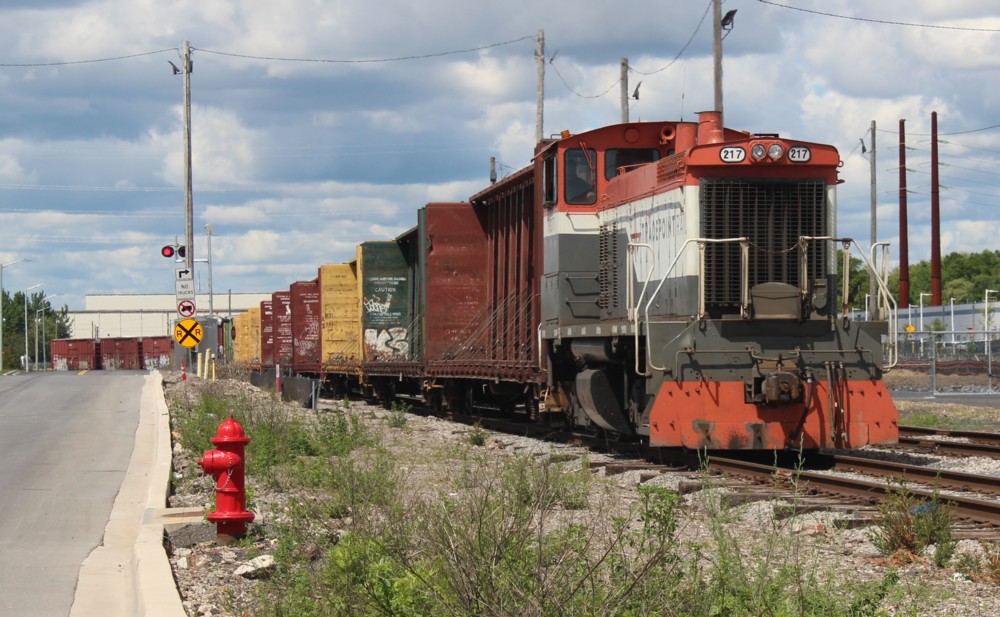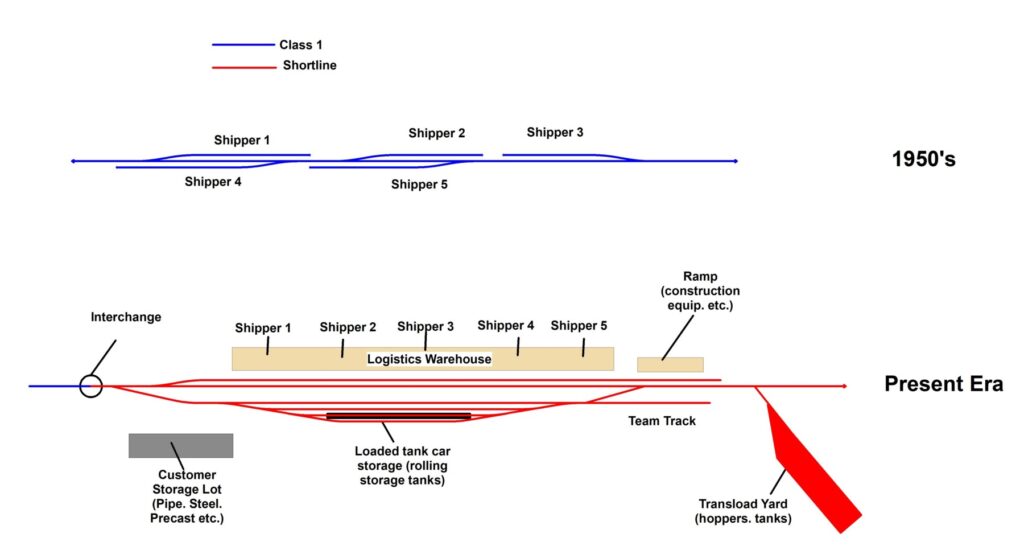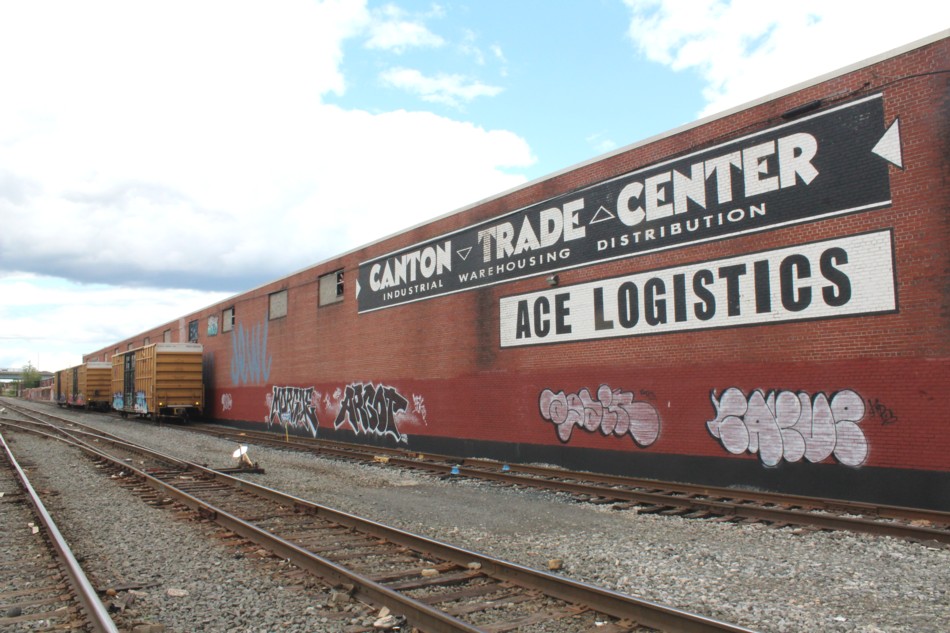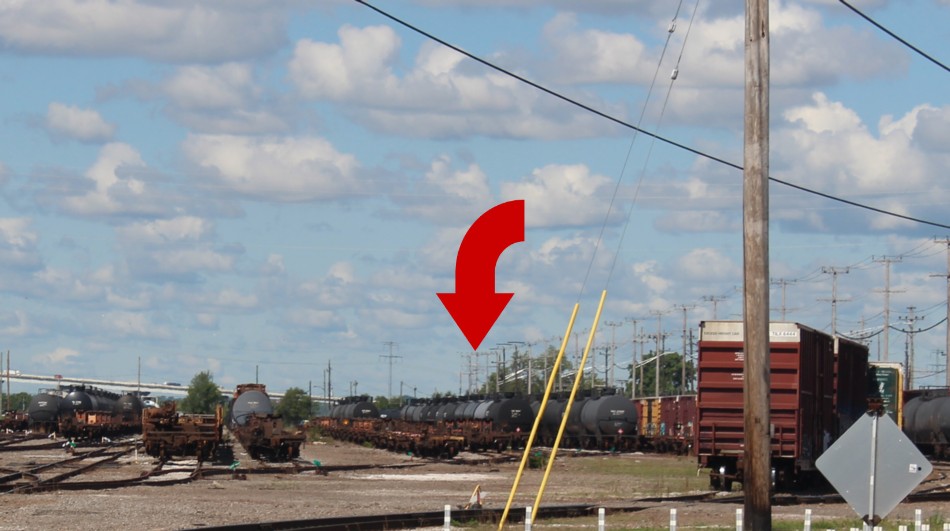
A Tradepoint Rail SW1500 hauls a cut of centerbeams on a transfer run up to the north yard.
Among my peer group the 1950’s were, and still are, the holy grail when it comes to modeling subjects. It’s a favorite for good reason. When working with customers over the age 60, the overwhelming majority want to set their modeling era in the mid-1950’s. Within that age group, the age sixty plus crowd, there is also a sense of sadness from the standpoint that they feel something has been lost, that those were the gold old days, and things will never be as great as they were during that time period. I’m not so sure. Yes, things have changed but, if you really study how rail traffic moves, far less than you’d think. Different doesn’t mean worse. In fact, it can mean opportunity. The good old days are now and here’s why.

Back in the fifties, the business model was one of numerous short spurs to any small shipper that wanted to ship a crate of applesauce out the door. No doubt, there’s some modeling appeal there in in that you have a large variety of structures each with a freight car parked at the door. In addition, model railroaders, by nature, love turnouts…the more the better. Lot’s of small industries, each with a short spur, lots of turnouts, that’s been the model railroad design model for almost a century.
The conventional thinking is that the old way of “railroading” is entirely gone. Only partly true. No railroad today is going to run a spur to every Tom, Dick, and Harry. What a lot of modelers don’t realize though, is that many of these small shippers are still served, just under a different and more efficient business model. The small shipper can, and still frequently does, receive rail cars today. They have a few options. One, is they can rent out space in what is called a logistics warehouse. These are large structures served by a single spur that have multiple loading bays rented out to small tenants. The other option is to have the railroad spot the customer’s small shipment on a team track and they can then send a truck over to pick it up. So, you still have a lot of small shippers it’s just a case of the railroads saying, if you want us to handle something small we will, but you have to come to us to pick it up.
Back in the 1950’s almost every small town had at least a few small spurs. In modern times, it’s more of a feast or famine situation. Some cities are loaded with activity, others have virtually none. In the Washington, DC area where I live, the fifth largest metro area in the country, there are virtually zero freight spurs. A half hour drive north to Baltimore and the rail environment is so dense and intense it’s overwhelming. There’s so much it’s hard to take in at once. If you don’t live near a modern rail hotspot,it’s understandable to see why you’d think the entire country is nothing but container trains going from coast to coast. It’s not.
Modern railroads have gotten creative when it comes to revenue streams. Storage is one such example. Let’s say a massive chemical industry doesn’t have enough storage space at their facility. The solution? Put the liquid in tank cars, store them in a rail yard, and get the cars as you need them. Rail yards also have lots of open real estate for storing bulk commodities such as pipe, beams, piles of aggregate, etc.

Ace Logistics off of Boston Street in Baltimore (Canton RR) houses multiple small shippers under one roof. The city was kind enough to put a comfy Starbucks next to it so as to minimize any discomfort to the railfan community.

Directly across Boston Street from Ace Logistic is the Boston Street Bulk Terminal. Notice the “odd-man-out” hopper.

At first glance you’d think this was a typical classification yard (Tradepoint Rail in Baltimore). In reality most of the cars are used for storage. Oh, and Tradepoint does NOT do this for free! It’s part of their revenue model.

Something just happened or is about to happen as far this tank car unloading scenario is concerned at a Tradepoint Rail team track lead. Note the pump and hose at the bottom of the ladder.
Knowledge creates opportunity for better and more creative themes, better layout designs, and more interesting operating sessions. The 1950’s were great but it’s time to move on and embrace the opportunities that are right in front of us, and right in front of us now. It’s time to move beyond the 1950’s in terms of model railroad design practices and it’s time to move on in terms of how we handle model railroad operations.